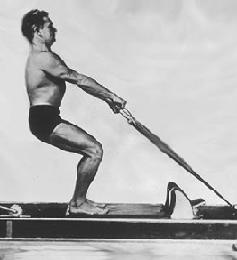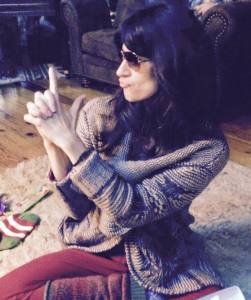Pilates Origins Workshop
Pilates Origins Workshop with Chantill Lopez
One teacher’s perspective on what Pilates is, was meant to be, and can be…
SPECIAL ANNOUNCEMENT: The Fulfilled & Successful Teacher 28-Day Online Workshop starts Jan. 18th. Sign up this week (Jan. 5th-9th ONLY) and receive $250 Bonus Gift! Click HERE!
My first meeting with classical Pilates was a little bit like shaking hands with someone whose grip is just a bit too strong. I admired the boldness and confidence, but interpreted the forcefulness as narrow and limiting.
As an emerging teacher I knew myself well enough to see that my path lie in cultivating a practice that was more malleable and creative, with more options for insight and intuition — or that is what I thought I was doing.
I’ve come a long way since then and have completed the orbit — this one at least — and there is a very beautiful thing that happens when you reach this place.
In this moment there is a pause where you see connections, have a well-earned ounce of clarity, openness, and ease.
What ever you imagined you knew, you realize you may never know, and yet there is a sense of understanding and appreciation that only comes from immersion and experience. You can see from both directions. We come to these places about all kinds of things, and throughout our lives. It’s a super cool place.
In the Pilates Origins Workshop, a portion of which you are about to watch and/or listen to…
THIS IS MY GOAL: To open up the discussion without a classic or contemporary agenda; to offer teachers an opportunity to discern for themselves what it is they are teaching, how it translates into their current understanding and beliefs, and how they might more fully invest themselves in the authenticity of the method they love.
My teacher and mentor, Carol Appel, started me on this path and more recently Amy Taylor Alpers has helped me complete a part of it — understanding the philosophy and crafting a strong point of view around it. I mention this concept quite a bit in the workshop and am grateful to the interview in which Amy first shared it with me. (Listen to the interview here).
Having a strong point of view and knowing WHY we teach is crucial to our own internal satisfaction and sense of service, not to mention for strengthening the practice we help our students cultivate.
AND our point of view can be open and kind and inclusive. Having a strong point of view doesn’t mean — to me — belittling another approach, or perpetuating the belief that my point of view is better or the only “true” perspective.
Intelligence and wisdom are both manifested by willingness:
willingness to be stretched, to be wrong, to be swayed, to listen, and most of all the willingness to discern.
That is what the Pilates Origins workshop is really about. It’s about not only translating Joseph’s writings and in turn better understanding what the method was originally designed to be, but a chance to be stretched, to listen, to question, and to see what point of view feels right for each of us.
I very much hope you enjoy the recordings. You may hate what I have to say, you may respond very strongly to my comments and interpretations OR you may love it and love me (wink, wink). Either way, I applaud you for your passion and hope that in some small way the discussion gets your juices flowing, your heart pumping, and your inspiration bubbling.
I’m open to questions and comments (only nice ones though) below. Enjoy, share and Happy New Year!
With gratitude and joy,
Chantill
P.S. A reminder to never take ourselves too seriously!
Audio and Video Files (2 Hours Total)
Audio Part 1
Audio Part 2
Pilates Origins Workshop Part 2 from Skillful Teaching on Vimeo.
Pilates Origins Workshop Part 1 from Skillful Teaching on Vimeo.



 How are you showing up? Why are you showing up? Why do you teach? What IS teaching? Why do you care? This is Skillful Teaching: A Whole-person approach to being an expert teacher, not an expert technician. There's a difference. Want to know what it is?
How are you showing up? Why are you showing up? Why do you teach? What IS teaching? Why do you care? This is Skillful Teaching: A Whole-person approach to being an expert teacher, not an expert technician. There's a difference. Want to know what it is?